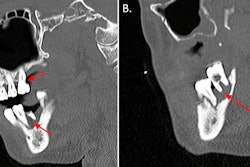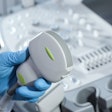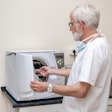
Editor’s note: This is the fourth in a series of articles in which we will bring in an expert to address some of the misinformation we have read in various social media posts and groups. You can see the previous three installments at the bottom of this article.
Q: Does every item need to be wrapped for sterilization? We sometimes don’t wrap things like bur blocks or large forceps because they don’t fit well in the pouches.
A: The sterilization process is complex and has the potential to affect the standard of care in your practice. Properly processing and maintaining the sterility of instruments will keep your patients safe. Any items that are being heat sterilized should be packaged according to the instrument's instructions. Not packaging the items indicates immediate use steam sterilization, or IUSS, which is a topic for another time.
It is critical that every item that requires steam sterilization be packaged. When a pouch is sealed appropriately, it seals out contaminants, maintaining sterility until that item is ready for use. Sterilization of unpackaged instruments exposes those instruments to contaminants in the air or on surfaces as soon as they are removed from the sterilizer.
Manufacturers make different-sized packaging to accommodate the proportions of different items. The key is to identify the most suitable package for your specific items. For exceptionally large or unwieldy items, it might be necessary to opt for packaging sizes beyond the standard ones used in your office. Ensuring the availability of such varied sizes is crucial for effectively packaging the items.
It can be tricky to know how to choose a sterilization pouch, but the proper selection of a pouch aids in a successful sterilization cycle within your sterilizer. Steris offers the following tips:
- Allow for 1 inch of space on each side of the item being sterilized. This allows the steam to properly contact each surface of the item.
- Don’t fill a pouch over 75% of its packaging volume. Once again, doing so allows the proper amount of steam to penetrate the pack and contact the item.
- Always consult the instructions for use from the manufacturer. Each pouch differs with the pouch seal and internal and external indicators.
Reviewing your sterilization process is always a good way to discover technical opportunities for improvement. Keep your patients safe by properly sterilizing items and storing them in appropriate, sealed pouches.
Reference
Steris Knowledge Center. Guide to Sterilization Pouches in Sterile Processing. Retrieved https://www.steris.com/healthcare/knowledge-center/sterile-processing/guide-to-sterilization-pouches-in-sterile-processing. Published September 16, 2021.
Sarah Stream, MPH, CDA, is a seasoned dental professional, educator, and speaker. She is passionate about being a lifelong learner and sharing knowledge with other dental professionals on a safe dental visit and compliance. She currently specializes in OSHA, HIPAA, and infection control, supporting dental facilities with their education and compliance needs. You can contact her at Stream Education and Consulting LLC or via email at [email protected].
The comments and observations expressed herein do not necessarily reflect the opinions of DrBicuspid.com, nor should they be construed as an endorsement or admonishment of any particular idea, vendor, or organization.



















